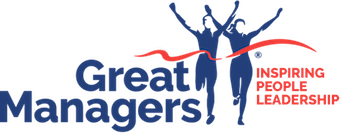5 Steps to Help Improve Your Employee Development Methods
As a leader, it’s your job to help employees in setting professional development goals. These 5 steps should help you choose training and development activities for your team.
Your employee development methods have a direct impact on your organisation’s success.
Choose poorly and you end up with demotivated employees.
They have nothing to aim for, so they’re not pushing to achieve the organisation’s vision. At worst, they’ll see your employee development methods as an inconvenience. This leads to a lack of commitment and a stagnant organisation.
The best employee development methods aid in retention. They also help those in your organisation develop the skills needed to push the group forward.
So, how do you help employees with setting professional development goals?
This 5-step plan will help you create powerful training and development activities for employees.
Improve Your Employee Development Methods Step #1 – Align Your Business Goals to the Development Plan
Your employee development methods mean little if they don’t align with your organisation’s goals. You’re looking to help employees develop skills that fill talent gaps.
Make two lists before creating your plan.
One will detail the organisation’s short-term goals, while the other focuses on the future.
Now, look at where your organisation stands in regard to achieving those goals. You may find that you don’t have enough salespeople to get your product out there. Or perhaps one of your departments needs a new manager to step up. Maybe you’ve identified a business process that you can’t execute because your employees don’t yet have the skills.
Those are gaps in your organisation that prevent it from achieving your goals. With those gaps identified, you can start looking at the skills your employees need to fill the gaps.
Do any of your current employees already have those skills?
If not, can you identify employees who want to learn them?
This analysis period creates the foundation for your employee development methods. It ensures you aren’t sending people to training sessions that don’t benefit the organisation. Instead, you know what you want them to achieve. As a result, you can focus their training on the key skills that your organisation needs.
This has a two-fold benefit for the organisation. Firstly, knowing what you need saves money. You won’t spend on development sessions that go nowhere. Each has a purpose, making it worth the money you spend.
Secondly, knowing what you want helps employees. You can communicate exactly what the training will help them to achieve. In doing so, you map out a clear route of progression for employees who undergo the training. If they develop the skills you want, they have more chance of moving into the roles you need somebody to fill.

Improve Your Employee Development Methods Step #2 – Communicate With Employees
Once you’ve outlined your basic goals, it’s time to talk to your team. Never assume that you know what they want. Each has different goals and aspirations. Good employee development methods align to these, as well as the organisation’s goals.
Hold individual meetings with each member of your team. Use them to discuss their career goals. This information allows you to pick out development programs that help employees develop their skills.
You can also use these meetings to allow employees a chance at self-reflection. Some people don’t consider the future of their careers because they’re so locked into their current roles. Have them examine their roles in greater details.
What areas of their current job do they struggle with?
Have they identified any skills that they need to develop?
Most importantly, do they think they could do more for the organisation than they currently are?
When challenged, you’ll find that most employees have some ideas for how you can help them. They may not have raised those ideas in the past. Perhaps they’d never really thought about it, or they didn’t think the organisation would support them. Some just need a little encouragement to help them reach beyond their current roles.
That’s why these conversations are so important. You’re helping employees in setting professional development goals that matter to them. Moreover, you’re showing your employees that you have confidence in them. You want them to learn more and you want to be there to help in any way you can.
These meetings add the personal touch to your employee development methods. They make your team a part of their own development process, which instantly engages them.
Improve Your Employee Development Methods Step #3 – Consider Potential vs. Readiness
After communicating with your team, you’ll have a better idea of what they want. You’ll also know from your own analysis who you think has the potential to move upwards.
Having potential is not the same as being ready. Just because you think somebody can do something, it doesn’t mean that they’re able to right now.
Let’s assume that you have a really talented salesperson. Other team members gravitate to them for advice, which shows they have leadership potential. But they’re comfortable and happy in their current role. You may see them as a future sales manager. However, they’re not thinking that far ahead.
Springing a new training program onto that employee now may dishearten them. They’re not ready to move their career forward, even though you can see their potential.
Being ready involves having the desire to move forward. It also requires a combination of experience and skill. Your employee may have an idea of moving into management at a later date. But that hasn’t manifested into a desire yet.
There are all sorts of factors that affect that position. The employee may not want to assume that level of responsibility yet, especially if they’re new to the organisation. Perhaps the role requires travel that would take them away from their family. In many cases, the employee doesn’t yet have the confidence needed to move into a new role.
Moreover, remember that potential doesn’t always lead to success. Just because somebody’s great at doing a job, it doesn’t mean they’ll be great at helping others do it. Management requires different skills, as you already know.
It all comes down to what the employee wants. Focus your employee development methods on what the employee feels ready to take on. When the time is right, this readiness will align with the potential you see in the employee.
Improve Your Employee Development Methods Step #4 – Consider Several Methods
The previous three steps help you in setting professional development goals. You align what your organisation needs with what your employees want.
Now it’s time to choose your employee development methods.
This is where many managers start making mistakes. They believe that formal courses are the only way to help employees develop professionally.
Courses can certainly help. In fact, they’re often key to a successful development program. But they’re not the only development methods at your disposal. A formal classroom session may work for some employees. However, others may prefer to take more control of their learning. Or, they’re practical learners who won’t develop the skills you need in a classroom setting.
The key here is that you’re looking for a method that engages the employee. Otherwise, they get that demotivated feeling mentioned earlier. It won’t matter that the course may help them. If they don’t connect with the method, they won’t care about the material.
There are several other methods that you can consider implementing. These include:
- Assigning stretch goals based on the projects the employee already handles. This method keeps employees engaged in their current work while challenging them to push a little harder. This is a good choice for employees who want to develop but may not feel ready for a new role.
- Working as part of an expert’s team. This may involve reassigning the employee. However, it also means they’re working for somebody who has the skills the employee wants to develop. They’ll see what their new skills can achieve, which offers a motivational boost.
- You can mentor the employee directly. This method works best when grooming an employee for a similar role to your own. It creates a more personal connection, plus you can offer advice specific to your organisation.
Each of these methods requires the employee to take on a portion of their potential future role. Courses can supplement what they learn on the job. The key is that you choose methods that gel with the employee.

Improve Your Employee Development Methods Step #5 – Create Your Plan
With your methods ready to go, it’s time to develop a plan.
Outline what you want the employee to achieve, and the time in which you want them to achieve it. Avoid vague goals. Specific targets are better motivators because they help employees to focus.
Beyond the goals, consider what work you need to put into the development plan. You may need to arrange classroom sessions or bring outside experts in to help. The training may also take the employee away from their current role. That means you need somebody to cover them.
The best employee development methods employ the 70 – 20 – 10 rule and subsequently your team should never be out of the business on training for long. Long seminars and retreats are proven to have less than 10% retention so instead, your team should learn small amounts over a longer period if you want the largest ROI. This is how we operate in the Great Managers Academy.
Consider how the training plan will affect how the organisation currently operates.
Once you arranged everything, talk to the trainee. Let them know what you have in mind and get them to sign off on it. Use this opportunity to help them understand what you want them to achieve and how it will help them. This is a crucial step. You need your employee to buy into the program, else they won’t commit to it.
Your work isn’t done once the training begins. Remember that these methods need to offer a return on your investment. If you don’t analyse the employee’s performance, you can’t gauge the effectiveness of your methods.
Encourage feedback from your employee. Furthermore, have them work on tasks that put their new skills to the test. You want them to use their knowledge as quickly as possible, else they’re likely to forget it. Train, then reinforce. Analyse the results constantly to see how you can optimise the plan, as needed.
The Final Word
Employee development involves much more than sending people on courses. You need to do all of the following:
- Understand what skills you need your employees to develop
- Identify each employee’s professional goals
- Identify each employee’s readiness to pursue those goals
- Choose the methods that will keep the employee engaged in their training
- Plan everything and analyse the results
Combine these steps and you’ll choose employee development methods that benefit everyone.
And remember, a great manager can DOUBLE the capacity of their people.
Register for our next webinar to learn more about inspiring your employees.





